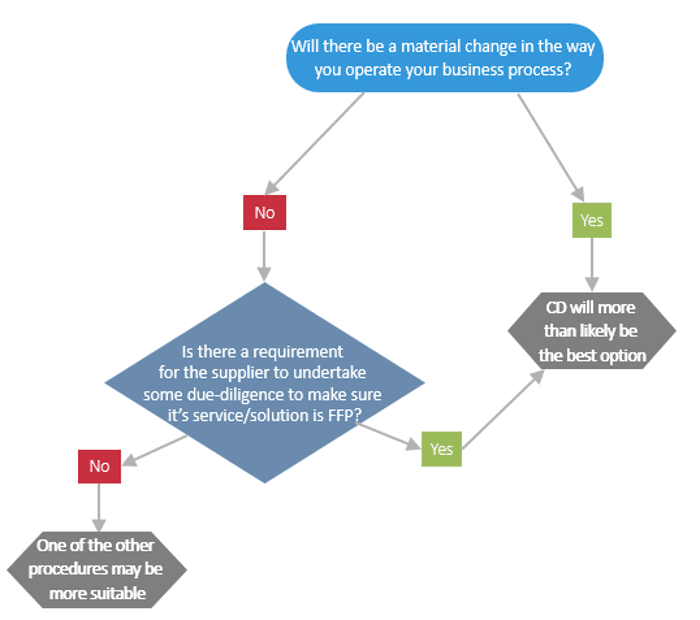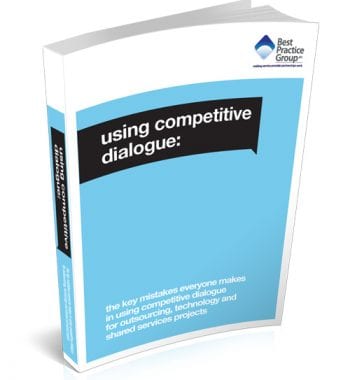Competitive Dialogue (CD) is a public sector procurement tendering procedure whereby you enter into dialogue with suppliers until you find a solution that meets the needs of your organisation.
It is ideal for complex and high-risk solutions where there are gaps in your requirements, outcomes, contract or commercials. You use the dialogues with suppliers to work together to fill the gaps in the above and help the suppliers better understand your requirements. In this way, they can develop their solution on a more informed basis to meet your needs.
This reduces the risk of entering into a contract with a supplier with unknowns in either the requirements, the solution, the contract or the commercials. If you don’t undertake dialogue before signing the contract and therefore try to solve gaps post-contract, there are most certainly going to be change control notices which may increase costs, timelines and ultimately put a strain on your relationship and the viability of the project. Competitive Dialogue aims to solve these issues and increase the chances of the solution being fit for purpose.
Examples of when to use the Competitive Dialogue Procedure
The following projects are examples of when Competitive Dialogue may be appropriate:
- Complex IT projects
- Business Process Outsourcing
- Engaging with a Transformation Partner
- Digital Channel Shift / Cloud Transformation
- Complex Hard and Soft FM
- Health and Social Care integration
- PFI
- Shared Services
Who shouldn’t use it?
You should not use Competitive Dialogue for commodity purchases which are simple to specify. For these purchases, you don’t need a formal dialogue process and the Open or Restricted Procedure would be better suited.
Example commodity purchases:
- IT hardware such as desktop computers
- Low-risk SaaS purchases
- Stationery
What the official EU Procurement rules say on Competitive Dialogue
Clause 26 of the EU Procurement Directive:
(4) Contracting authorities may apply a competitive procedure with negotiation or a competitive dialogue in the following situations:—
(a) with regard to works, supplies or services fulfilling one or more of the following criteria:—
(i) the needs of the contracting authority cannot be met without adaptation of readily available solutions;
(ii) they include design or innovative solutions;
(iii) the contract cannot be awarded without prior negotiation because of specific circumstances related to the nature, the complexity or the legal and financial make- up or because of risks attaching to them;
(iv) the technical specifications cannot be established with sufficient precision by the contracting authority with reference to a standard, European Technical Assessment, common technical specification or technical reference;
(b) with regard to works, supplies or services where, in response to an open or a restricted procedure, only irregular or unacceptable tenders are submitted.
So, Is Competitive Dialogue right for you? A Simple Decision Tree
If after reading the above, you are still unsure if Competitive Dialogue is right for you, you can use the following decision tree to support your answer:

Do you want to know more?
If you’ve decided that Competitive Dialogue is right for your circumstances, speak to someone at BPG – we’re experts at running CD procurements for complex solutions. Call us on 0845 345 0130, email advice@bestpracticegroup.com or schedule a confidential chat directly with an expert here.


